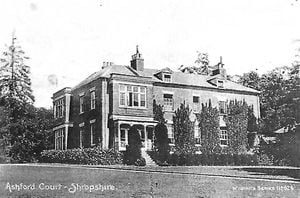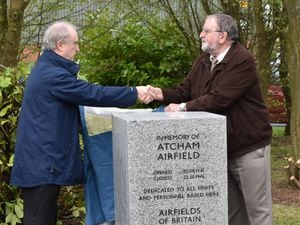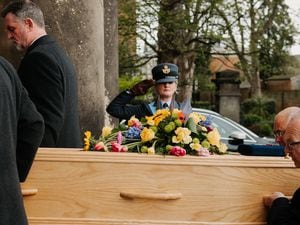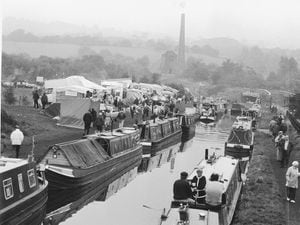Estate history is my life's work says Phyllis
In writing a history of a Shropshire estate, local historian Phyllis Ray from Ludlow feels she has completed her life's work.

"I was born in 1928 and I'm nearly 90. I feel it was something I had to do while I was still around," said Mrs Ray, whose book is called "The Ashford Court Estate 1600-1950" and tells the story of the estate, now broken up, near Ludlow.
"I felt I had got all the information and if I collapse people will come along and clear out all my papers and it will all be chucked away. I made a big effort last year to write this book and get it out of the way and now I feel, and I know this sounds daft, that I have done my life's work. I didn't want it to die with me.
"Nobody else has really done a history of the parish and certainly nobody has done a history of Ashford Court. I had access to a lot of private papers. It is completely new research.
"My father was Roland James and he farmed at the New House Farm, Ashford Carbonel. That's where I was born. I went away after I finished school in Ludlow and then I came back in the early 1970s. My husband had died and I wanted to get back to my roots.
"I ended up in Ashford Carbonel sharing a house with my mother, right next door to the house I was born in.
"I needed something to occupy myself and got interested in local history and family history. I just dabbled, trying to find out things about Ashford Carbonel and gradually I expanded it. I published a book which I called 'Ashford Carbonel, A Peculiar Parish.' That was a general history of the parish."
However, at the time she had not been able to find out much about Ashford Court in the 19th century.
"From various sources I found out a lot more about what had happened at Ashford Court. There was a family, the Walker family, which I researched and I did a history of the family for them - they lived abroad. I thought that I had a lot of material here and that I really ought to write up the history of the whole estate. I found that I had stuff starting from roughly 1600 to 1950. I set to, and wrote it.
"During the 19th century the estate was not just in Ashford Carbonel, but extended over the river into Ashford Bowdler. In 1882 the whole estate was sold and the Ashford Bowdler lot disappeared, and it was just the Ashford Carbonel lot left. Gradually that got whittled away and then in 1950 it was dismembered, as it were, being put up for action in different lots. Mainly sitting tenants bought their own properties. The whole estate disappeared.
"There is still Ashford Court, with people living there with a few acres around it, but there is no Ashford Court estate now."
Phyllis' book is for sale at the Castle Book Shop in Ludlow.
Among the stories she tells is how the outbreak of war in 1939 had a big impact, with Ashford Court, which was in the hands of the Fraser family, being commandeered to house part of Lancing College, which was evacuated from the Sussex coast.
"The Frasers moved into the chauffeur's house, known as the Cottage, while the chauffeur and his wife moved into the Court to work for the college as butler and housekeeper."
Lancing College, she says, had its centre at Moor Park in Richards Castle, and boys from the satellite houses - Ashford Court, Caynham Court and the Lodge at Overton - went there every day for tuition.
"Every morning a horde of boys on bicycles erupted through the drive gates at the Court and swept up the village, like a flock of birds returning to roost in the evening, adding colour and movement to what was a sleepy backwater."
After the war the college returned to Sussex, but the Frasers never went back to Ashford Court, moving instead to South Kensington.
The estate went on the market, and was briefly in the hands of Mrs G.M. Williams, a member of a family of timber merchants, but by 1950 the whole property was again on offer by public auction in individual lots. The sale was on November 13, 1950, at the Feathers Hotel, Ludlow, and most of the lots were bought by the sitting tenants. The Court itself went to a Ludlow doctor, Harcourt Zair.
"So ended nearly 350 years of history, during which the estate had developed from small beginnings, had seen the comings and goings of a diversity of different owners and tenants, and had finally fragmented back into small, individual units.
"The original half-timbered Court House still survives, standing dominant in the centre of the village, though it is now the Brook House, as it has been for over 200 years.
"The Court is still the elegant Georgian mansion built by Samuel Yate Sprott in the late 18th century but it can no longer be admired from a distance, as he had intended, being now so shrouded by trees as to be hardly visible until one is almost at the front door."





